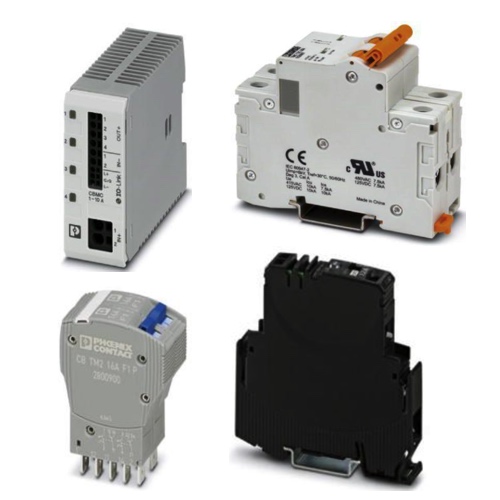Phoenix Contact Circuit Breakers

Phoenix Contact circuit breakers provide precise and dependable protection for electrical systems used in industrial automation, control panels, and machine applications. Designed to prevent overloads, short circuits, and unplanned downtime, these devices support safe and stable power distribution across a wide range of operating conditions. As a trusted manufacturer, Phoenix Contact delivers circuit protection solutions known for accuracy, durability, and consistent trip performance.
RSP Supply carries a full selection of Phoenix Contact circuit breaker solutions, including electronic circuit breaker models and traditional thermomagnetic device circuit breaker designs. Thermomagnetic breakers combine thermal and magnetic trip mechanisms to respond to both sustained overcurrent and short-circuit events, making them well-suited for general power distribution and industrial equipment protection. Electronic circuit breakers use advanced sensing and control technology to deliver adjustable trip settings and precise current monitoring for sensitive loads.
Engineered for DIN rail mounting and seamless integration into automation systems, Phoenix Contact circuit breakers support efficient panel design and simplified maintenance. Their compact form factors and modular accessories make them a reliable choice for safeguarding PLCs, I/O modules, power supplies, and other critical control components in industrial environments.
FAQs
Q: Do Phoenix Contact circuit breakers protect sensitive electronics from overcurrent?
Yes. Phoenix Contact circuit breakers are designed to protect sensitive electronic equipment from overcurrent conditions by quickly interrupting power when abnormal current levels are detected, helping prevent damage and downtime.
Q: What is the difference between electronic and thermomagnetic circuit breakers?
Electronic circuit breakers use sensors and electronic control to monitor current and provide highly accurate, adjustable protection. Thermomagnetic circuit breakers rely on thermal elements for sustained overloads and magnetic response for short circuits, making them suitable for traditional industrial power applications.
Q: Can Phoenix Contact circuit breakers handle short circuits and voltage dips?
Yes. These circuit breakers are designed to respond rapidly to short-circuit events while maintaining system stability, helping reduce the impact of voltage dips on connected equipment.
Q: How do I choose the right Phoenix Contact circuit breaker for my system?
Selection depends on voltage, current requirements, load type, and application sensitivity. Electronic circuit breakers are often preferred for control circuits and DC applications, while thermomagnetic breakers are commonly used for general-purpose power distribution.
Q: Are Phoenix Contact circuit breakers suitable for industrial automation systems?
Yes. Phoenix Contact circuit breakers are widely used in industrial automation, machine control, and panel-building applications due to their compact design, reliable trip characteristics, and compatibility with modern control architectures.
Why Buy Phoenix Contact Circuit Breakers from RSP Supply
RSP Supply is an authorized distributor of Phoenix Contact products, offering a reliable selection of circuit breakers for industrial applications. Customers rely on RSP Supply for knowledgeable technical support, consistent product availability, and circuit protection solutions designed to support safe, efficient, and long-term system performance.

